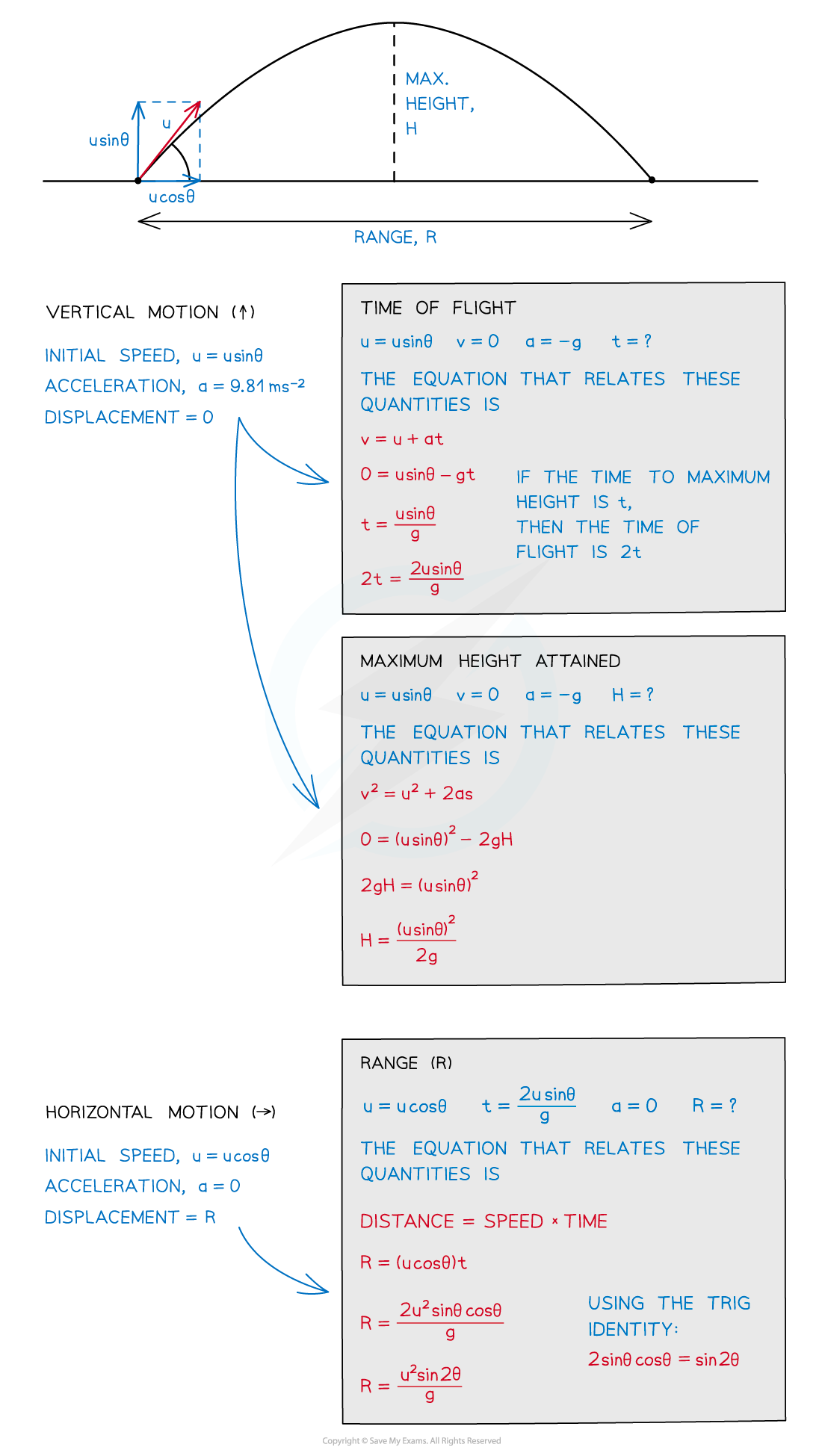Projectile Motion (OCR AS Physics) : Revision Note
Vertical & Horizontal Motion of a Projectile
The trajectory of an object undergoing projectile motion consists of a vertical component and a horizontal component
These need to be evaluated separately
Some key terms to know, and how to calculate them, are:
Time of flight: how long the projectile is in the air
Maximum height attained: the height at which the projectile is momentarily at rest
Range: the horizontal distance travelled by the projectile

How to find the time of flight, maximum height and range
Problems Involving Projectile Motion
There are two main considerations for solving problems involving two-dimensional motion of a projectile
Constant velocity in the horizontal direction
Constant acceleration in a perpendicular direction
The only force acting on the projectile, after it has been released, is gravity
There are three possible scenarios for projectile motion:
Vertical projection
Horizontal projection
Projection at an angle
Worked Example
To calculate vertical projection (free fall)
A science museum designed an experiment to show the fall of a feather in a vertical glass vacuum tube.
The time of fall from rest is 0.5 s.

What is the length of the tube, L?
Answer:

Worked Example
To calculate horizontal projection
A motorcycle stunt-rider moving horizontally takes off from a point 1.25 m above the ground, landing 10 m away as shown.
What was the speed at take-off?

Answer:

Worked Example
To calculate projection at an angle
A ball is thrown from a point P with an initial velocity u of 12 m s-1 at 50° to the horizontal.
What is the value of the maximum height at Q?

Answer:

Examiner Tips and Tricks
Make sure you don’t make these common mistakes:
Forgetting that deceleration is negative as the object rises
Confusing the direction of sin θ and cos θ
Not converting units (mm, cm, km etc.) to metres

You've read 0 of your 5 free revision notes this week
Sign up now. It’s free!
Did this page help you?
